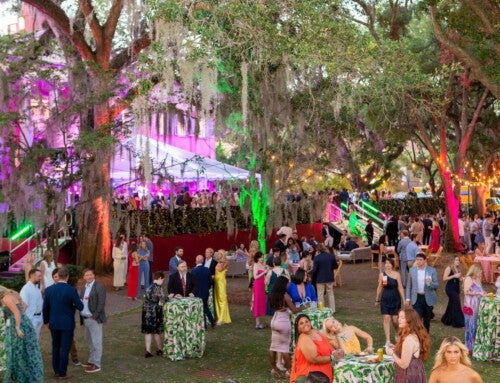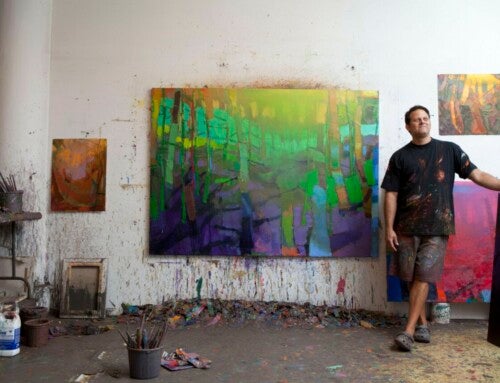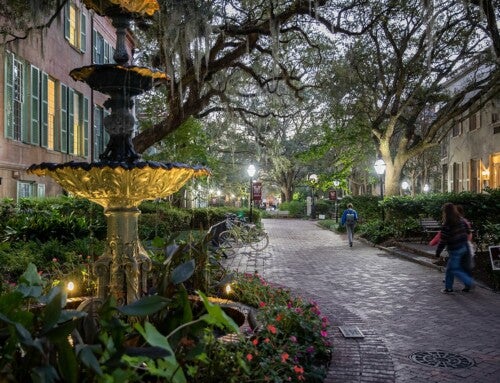Brad Burns ’03 has his eye on the Olympics.
More accurately: As the technical lead overseeing the four high-resolution imaging systems – each with 13 cameras – that are monitoring the Rio games from the sky, Burns has 52 “eyes” on the Olympics.
From balloons anchored 200 meters above the ground, the Simera camera systems are providing an unprecedented level of security by viewing all activity on the ground and capturing gigabytes of data every second. The wide-area motion imagery systems allow operators to zoom in at any point and follow vehicles or people in near-real time, or backward or forward in time. With just one click on an individual, they can see where that person was a couple of hours ago and track their activities moving forward.
It’s the first time the system’s core technology has been exported for civilian use – although Burns is plenty familiar with it. As the director of engineering and science at Logos Technologies – the creator of the Simera system and its predecessor, Kestrel – he has worked with the military technology for years, mostly in Afghanistan.
Burns – who attended the Honors College and majored in physics – has certainly covered some ground over the years. We tracked him down in Rio to ask him about what he’s been up to, what he has his sights on now and how this “eye in the sky” technology might change national and domestic security forever.
Also: Go U.S.A.!
First, give us a little background. Where are you from, and how did you end up at the College of Charleston?
I grew up just north of Chicago in Wilmette, Ill. The honest answer for how I ended up in Charleston is that it was one of the only places still accepting applications when I finally decided college was the direction I should go. Best mistake I ever made. So good, in fact, my sister followed four years later.
What have you been up to since you graduated from the College of Charleston?
After CofC, I went directly to D.C. to start a Ph.D. program at Georgetown University. By the time I was finished, I was already working for ITT (another defense contractor). When I finished, they made me a full-time employee. In 2011, a coworker from ITT moved to Logos and a few months later asked me to head there as well.
What has been the best part of your career so far?
That’s really hard to say. I’ve been lucky enough to be in some really cool positions in a few short years. The six consecutive months [working with the Kestrel system] in Afghanistan was difficult for a lot of reasons – but it was definitely the most rewarding. When you go there, you’re needed to fix or maintain something that is protecting Americans. Work doesn’t come much more important than that.
What has been your role in getting the Kestrel and Simera systems off the ground (pardon the pun)?
For the Kestrel system, I originally deployed as a forward service representative. My job was to keep the systems running and help the engineers back home flush out any oddities or oversights on the sensor and to make sure that it worked and that we understood everything about it. In six months, I had almost 50 movements between five sites. After that, I deployed for one month and then again for two months to assist in high-risk upgrades and modifications.
For the Simera system, I was the technical lead of a team of around 15 people spanning hardware and software. Logos has some ridiculously talented people, so that role was more about corralling that talent and, more frequently, knowing when to get out of their way. The timeline was very short to finish development and get the sensor checked off. Leading the field tests and demonstrations for the Brazil deployment was a high stress environment, often with the Brazilian government or police sitting on our shoulders.
What is the coolest thing about the Simera system?
Logos does two things better than just about anybody in defense right now. For one, we collect more pixels and understand our imaging sensors as well as anybody in industry, which enables the second thing we do better: With the information we get from our sensors and pixels, it is possible for our imagery specialists to seamlessly stitch hundreds of images over city-sized areas in near real time. (Simera is the latest instantiation of that capability.) Combining those means that we are the only major player providing capabilities that can render city-sized areas and keep that data for up to 30 days for forensic use.
Moving forward, how does this technology improve security – both for the military and in the civilian world?
It is kind of out of the scope of my job to speculate on that. I can say that providing the U.S. military the capability to search and exploit 30 days of data over a base saved many lives and prevented a lot of attacks.
In terms of civilian application, Logos products (Kestrel, Simera, etc.) provide imagery over the entire scene, all the time, whether you are actively looking at it or not. Storing that imagery allows operators to rewind and see activity that could lead up to an event of concern. We hope to be able to provide security at the next Olympics, as well as the upcoming World Cup in Qatar.



![Simera_Brazil_Altave-Balloon_10-2-2015-3cc[1]](https://today.cofc.edu/wp-content/uploads/2016/08/Simera_Brazil_Altave-Balloon_10-2-2015-3cc1-225x300.jpg)


